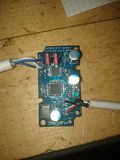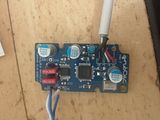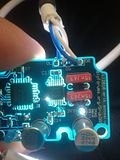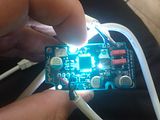I (finally) finished my first GrubDAC build, and I am extremely happy with it. This is a great entry into an improved DAC (from my laptop sound card, anyway) as well as a good way to start into SMD work. I swear I've never heard my music library before - it's made that much of a difference for me. Thanks Cobaltmute for the great design, and to TomB for the kits!
I experienced one issue as I was constructing mine, and I thought I'd record it here in case someone else runs into the same issue. After getting the board populated and the RCA and USB cables attached, I was getting the "USB device not recognized" under Windows 7, usually followed by "Device driver failed to install correctly." I followed the advice in some of the other GrubDAC threads, checking and double-checking my soldering on U1 and U3, primarily. After much time spent reflowing those chips and carefully determining that I had no bridges or bad joints, I moved on to reflowing the other components. Finally, I redid the soldering on X1, and bingo - it did the trick! I was concerned that I had somehow damaged U1, but no, I just had not done a good enough job with the oscillator. Everything is working like a charm now, and sounding fantastic.


























